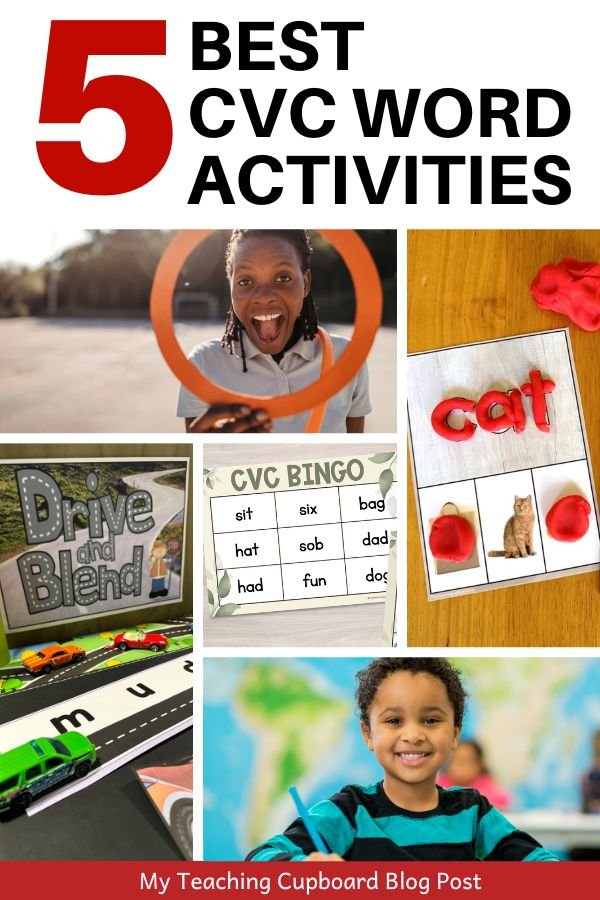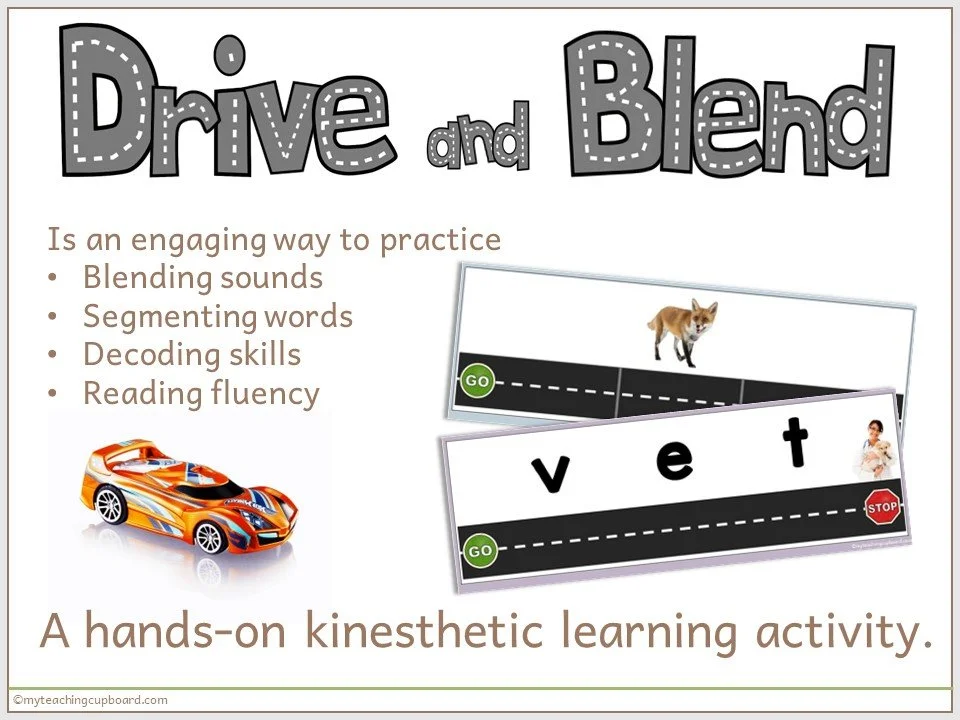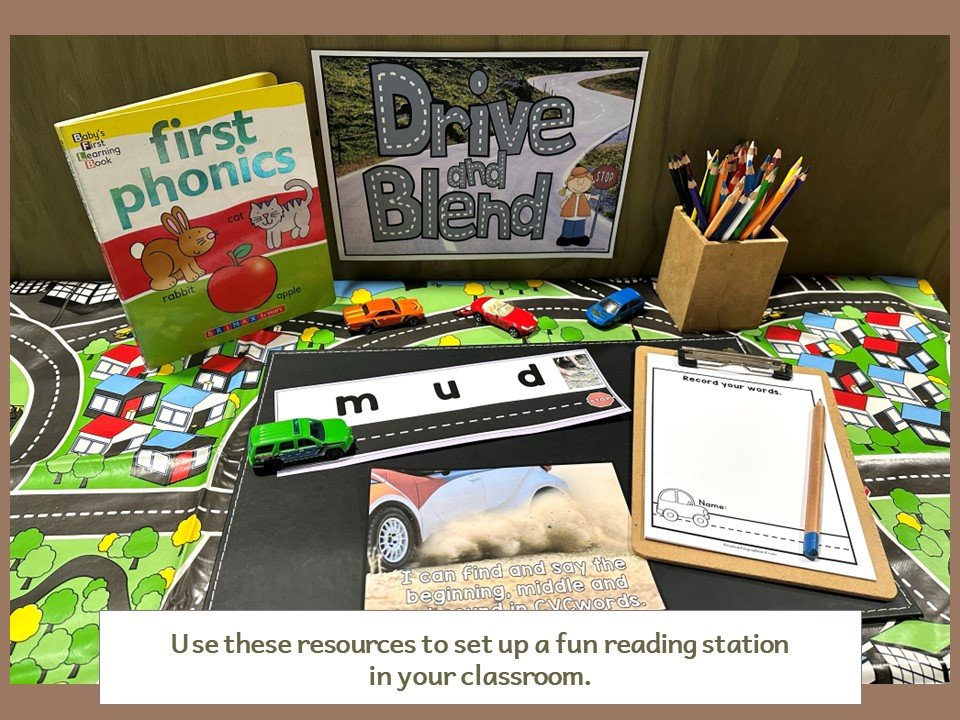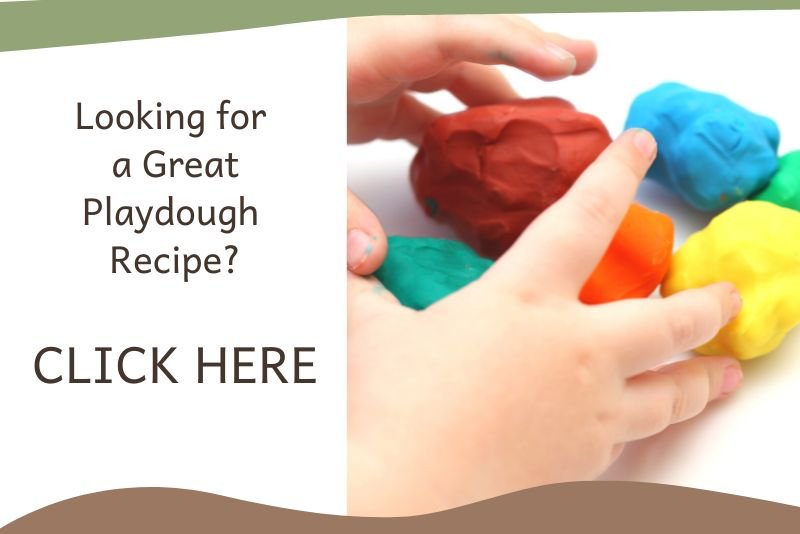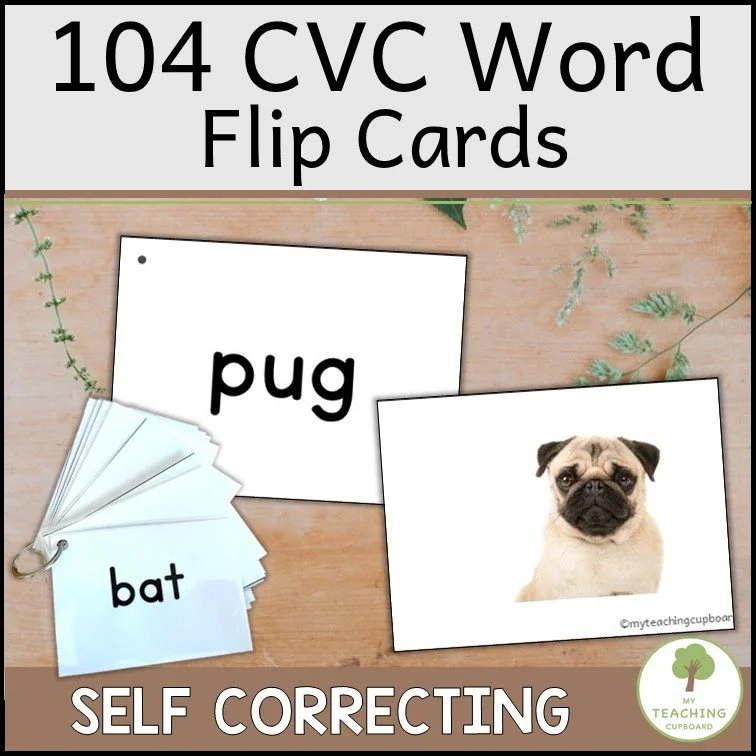5 Best CVC Words Activities and Games for Kindergarten
Discover 5 fun and effective CVC words activities for kindergarten! These hands-on, play-based ideas help young learners master consonant-vowel-consonant words, build phonemic awareness, and boost early reading skills. Plus, grab your free printable CVC word list!
Want to know more about CVC words and how to teach them? In this blog post, you’ll discover 5 CVC word activities that are fun and engaging. More important than that though – these activities work!
As a seasoned educator with years of experience teaching through play based learning, I understand how important it is to use engaging activities and inviting learning invitations in the classroom. Believe me, I also understand the significance of CVC words (Consonant-Vowel-Consonant words) in early literacy development.
I’ve had heaps of experience teaching prep, kindergarten, and grade one. Over the years, I’ve tried many lessons and activities to teach CVC words and many more to get my students to practice CVC words.
Although there are hundreds of CVC word activities all over the internet, I’ve got my TOP 5 to share with you here.
No matter how many new ideas I try, I always fall back on these 5. I use them consistently in my classroom, and they are all such a fun way to learn CVC words.
We all know how important it is to make our CVC activities engaging and interactive. This really applies to everything we do in the early years classroom. Young kindergarten students like tactile learning, and they love movement. That’s why I am such a big fan of play-based learning.
As teachers, we want easy-to-implement activities that get results. I know you are going to not only love my tried and tested CVC word activities and CVC word games, but you are also going to like how easy they are to implement and set up.
I'm all for an easy way - and a better way!
And let’s be honest - finding CVC word activities that are both effective and aligned with your literacy outcomes can be tricky.
That’s why this post is all about practical solutions: fun, hands-on activities that help your students build early reading skills, master the sounds of each letter, and develop confidence with real CVC words.
The more you use them, the more your students become familiar with the routine, and the quicker they can get into the activities. That equates to more efficient use of learning time. There will be less prep and fewer activity explanations for you.
Using them over and over in your classroom will not only train your kids how to do the activities, but repeated practice will promote phonics practice and reading fluency.
Before we get into the activities, let’s get really clear on what CVC words are and their significance in early literacy development.
What is a CVC Word?
A CVC word is a word that follows the consonant-vowel-consonant word pattern. Some examples of CVC words include: cat, bed, his, log, and not.
These words consist of three letters: a consonant, a vowel, and another consonant in that order. The vowel is always a single short vowel sound, and the word always starts and ends with a consonant.
Simple CVC words are often some of the first words introduced to children when they begin learning to read. They are relatively easy to decode and sound out. Understanding CVC words helps build foundational reading skills and phonics knowledge in young students.
They are a common word kindergarteners practice reading and writing. A list of CVC words list is a resource most early childhood teachers have on hand.
If you are a kindergarten teacher, you will use a CVC words list for:
Phonics Instruction: CVC words are a major part of early literacy and phonics lessons because they are perfect for teaching children the relationship between letters and their corresponding sounds. First grade and kindergarten teachers use CVC words to help children grasp basic phonics rules and decoding skills.
Early Reading Practice: CVC words are often the first words that young learners can decode and read independently. Having a list of CVC words gives kindergarten teachers a ready set of words for their students to practice. As children master these simple words, their confidence in reading grows, and they become more motivated to explore more complex words.
Word Building Activities: CVC words are ideal for word building exercises. Students can use letter cards or magnetic letters to help create CVC words and then easily manipulate the phonemes to develop their understanding of phonics and spelling patterns.
Vocabulary Expansion: Well, we all know this is a big one in the early childhood classroom. A comprehensive list of CVC words will help teachers to introduce new words to their young learners and help them expand their vocabulary. CVC words can also help students to progress into more complex words and word families.
Reading Assessments: I don’t know how many times I’ve used my CVC words list in assessments. They are essential for assessing reading abilities and phonics knowledge.
Emergent Writing: CVC words are manageable for young children to write. You can encourage emergent writing by having your kids practice writing CVC words and reinforce letter-sound connections.
So I hope you have a good list of CVC word list close by. If not, you are in luck! I have compiled a list of CVC words you can download for free HERE in my Free Resources library.
Grab this CVC word list to support your phonics lessons, track students' progress, and foster early reading and writing skills in your young learners.
Now you know exactly what a CVC word is and you have a comprehensive list to use, let’s look at some teaching tips before I finally share those 5 top engaging and interactive CVC word activities.
Tips for Teaching CVC Words in Kindergarten
I have been teaching CVC words to my kindergarten and grade one students for what seems like a lifetime. It is a crucial part of your early literacy instruction and it can be fun and exciting for your students. I have put together some teaching tips and best practices to make teaching and practising CVC words all run smoothly.
Start with the Same Short Vowel Sounds: Introduce CVC word families with the same short vowel sounds first because they will be easier for young students to grasp. Focus on one vowel sound and one word family at a time before moving on to the next word family and next vowel.
Use Visual Aids: Visual aids like pictures representing CVC words are important if you are teaching phonemic awareness. Phonemic awareness is all about the sounds (phonemes) and not the letters (graphemes). Only use written CVC words when your students have mastered their phonemic awareness skills. I can’t stress enough how important practising the segmenting and blending of individual phonemes is to build a solid foundation for decoding. If you want to learn more about this important skill, check out this blog post: Science of Reading Decoding Strategies with CVC Words
Hands-on Activities: Engagement soars when you use hands-on activities. Have a good selection of manipulatives like letter tiles, magnetic letters and letter cards available for your students. All of my top 5 CVC word activities are interactive. Nothing comes close to boosting engagement and helping the learning stick!
Practice, Practice, Practice: Provide ample opportunities for students to read and write CVC words over and over and over. Use levelled decodable readers containing CVC words, CVC word flashcards and sentence starters using CVC words. Regularly review and revise previously taught CVC words to reinforce learning and ensure retention. Repetition is key if you want your students to really master these simplest words.
Incorporate CVC Words in Context: Integrate CVC words into your class experiences. Read picture books that focus on CVC words, label items in your kindergarten classroom learning environment and set up literacy centers or investigations - or learning centers focused on CVC words. It will all help your students connect CVC words to their real-life experiences.
Positive Reinforcement: Praise and acknowledge students' efforts when they read or write CVC words correctly. You no doubt know how much positive reinforcement boosts a child’s confidence and motivation, but I had to mention it.
Remember that every child learns at their own pace, so be patient and provide individualised support as needed. By making learning fun and interactive, kindergarten teachers can build a strong foundation for their students' reading and writing success.
Now you know all my tips and tricks, let’s explore my top 5 Fun and Engaging CVC Words Activities for Kindergarten.
5 Fun Activities to Do with CVC Words
Here are the five tried and tested activities that will not only make learning CVC words enjoyable but will also help your students become confident readers and writers.
1. CVC Word Writing with Picture Clues
One of my favourite CVC word activities is plain and simple. CVC word writing. It might be simple, but it’s mighty! This activity is a highly effective way to reinforce letter-sound relationships and improve my student’s CVC fluency.
Here's exactly how this activity works:
Start by selecting clear and easily recognisable pictures that represent simple CVC words. For example, you can use pictures of a cat or a dog, or the sun.
Show one picture at a time to the class or small group. I prefer to do this activity with a small group, but it works fine as a whole class lesson. Hold the picture up for everyone to see and ask the students what they think it is a picture of. Encourage them to say the word aloud together. This step will get them ready for segmenting the sounds in the word.
After saying the word together, lead the children in segmenting the sounds they hear in the word. For example, if you're showing the CVC picture of the sun, ask them to identify the first sound they hear /s/ and then the middle sound /u/, and finally the last sound /n/.
Now comes the important part! As the kids segment the sounds, have them write the corresponding letters in their books or onto mini whiteboards.
As your students write the letters and form the word, celebrate their efforts and progress. Words of encouragement and praise go a long way and will boost their confidence. They should feel proud of their developing writing skills.
One of the reasons this activity is so powerful is the excellent opportunity it provides for personalised intervention. You will be able to identify areas where individual students might need extra support or guidance. There’s nothing quite so effective as being able to teach a skill when it is needed most.
By using this activity regularly, you'll be amazed at how quickly your students grasp CVC words. We do this activity daily in our small group literacy rotations. The pictures and hands-on approach make learning CVC words easier.
I’ve got a free set of CVC pictures for you to download. These are the ones I like to use for this activity. I cover the word underneath each picture when I show it to the children and then reveal it so the children can self-check their work. You can instantly download my set of CVC word pictures for free here: CVC Pictures
2. CVC Word Reading and Blending Sounds
It is important children get plenty of practice blending sounds to read CVC (consonant-vowel-consonant) words. I like to use engaging resources to get my kids eager to practice blending their CVC words.
I’m always trying to create resources that link to my student’s interests and get them excited about learning. This hands-on activity is so engaging because it taps into their interest in cars!
In this activity, your students drive a toy car along a CVC reading road. As they drive, they learn to segment and blend each CVC word. CVC word practice becomes fun and engaging with this class favourite.
Your students will drive a little faster each time and master their CVC word reading fluency in no time.
All you need is a little car, a marker, and a few strips of cards for this activity. Using the marker, write a CVC word on each of the card strips. The card strip becomes your reading road. Space the letters out a little and only write one word on each card.
Your students drive their little toy car over each letter and say the beginning, middle, and ending sound of the CVC word. It’s that simple. This activity is also one of my favourites because it is so easy to implement.
I like to repeat this activity with the same word and have the students drive their car a little faster each time. Tell your children they can really speed up if they know the sounds well enough to make a word.
Want a really comprehensive set of these roads already done for you? They look like real roads.
These Phoneme Blending - Drive and Blend CVC Words cards feature different CVC words for your students to practice. They will be blending the sounds together to read the complete words in no time.
This activity helps students identify and blend the beginning, middle, and ending sounds in CVC words. The road visuals are not only engaging, but they help students with directionality too!
My Drive and Blend resource not only builds phonemic awareness but develops decoding skills and reading fluency too. And on top of that, you’ll be developing orthographic mapping skills as well.
Orthographic mapping is a cognitive process crucial for learning to read and spell words accurately. It’s all about forming permanent word memory banks in the brain. When encountering a word, a child visually encodes its letters and spelling patterns and associates them with their corresponding sounds and meanings. Repeated practice and exposure helps the child consolidate these connections. When a child has well-developed orthographic mapping skills, they will have mastered the decoding of CVC words and have fast and automatic CVC word recognition. It really is all about the practice!
Another reason I like this resource so much is that it includes four differentiated sets. It makes catering to the diverse needs of your students so much easier. You can choose from picture card sets, letter card sets, self-correcting cards, and CVC word card sets with matching pictures.
How I Use These Fun CVC Cards in the Classroom:
Play-Based Literacy Area: It’s easy to create a literacy investigation area with the Drive and Blend CVC Word cards.
Small Group Literacy Rotations: Using this activity in a small group allows me to work closely with individual students. I love working with small groups because it’s so much easier to monitor individual student’s progress and provide personalised support.
Reading Stations & Literacy Centers: I can set up highly engaging literacy stations with all the differentiated sets included in this resource.
Reading Intervention: For my grade one students who need a little extra support with CVC word decoding, this resource has proven to be a valuable intervention tool. It’s a great one to give parent helpers too.
Homework and Early Finishers: Because my students love these Drive and Blend cards so much, they make great homework activities. They are perfect for early finishers too. It’s a good way for students to practice blending at their own pace.
The Phoneme Blending - Drive and Blend CVC Words resource develops phonemic awareness, decoding skills, and reading fluency. By transforming reading practice into a hands-on engaging activity, this resource engages students and builds essential literacy skills. Whether used in literacy centers, small group rotations, or as part of reading intervention, this resource will undoubtedly be a classroom favourite.
3. Jumping Into Hoops – a Phonics Obstacle Course
Learning doesn't have to be confined to inside the classroom. It can be active and fun too! That's why we love this simple Jumping into Hoops game. It’s like a little mini phonics obstacle course. I don’t know about you, but if I can combine literacy with any type of whole-body movement, it’s a game changer!
For this fun game, you will need to place three hoops in a row on the ground. Each hoop has a letter from a CVC word in it. We play this game on the concrete and write the letters in chalk. I often see the kids using the letters and hoops to revise the activity at lunchtime. You can use large letter cards if you want to swap out the letters and make new words quickly.
The students jump from one hoop to the next, saying each sound and blending them to make the CVC word. The physical movement combined with the phonics and blending practice makes for an effective and very entertaining learning experience.
If you have a large carpet space in your classroom, you can create this little obstacle course inside the classroom too. You can even place hoops around the room in a strategic path.
We love this CVC word game because it consolidates letter-sound correspondences, promotes gross motor skills, and reinforces decoding and blending.
Another bonus is how easy this game makes it to introduce the concept of CVC word families and explore common word patterns.
Word families play a vital role in helping children recognise common patterns in words. CVC word families are groups of words that share the same ending sound or rime while having different initial consonants.
For example, the -at word family includes words like cat, bat, mat, rat, and sat.
It is essential that CVC word families are included in your literacy curriculum because they provide a structured way to introduce and reinforce phonics and spelling patterns to your young learners.
Using the phonemic awareness skill of phoneme manipulation is also crucial when teaching reading and writing. This important skill is so much easier to teach if you use the above Jumping Into Hoops game. The ability to identify and manipulate individual phonemes (the smallest units of sound in language) requires students to add, delete, or substitute phonemes to create new words.
Phoneme manipulation helps students to decode and spell new words. By swapping out the initial sound in the CVC word families, students can identify patterns and generalise them to new words within the same family. For example, if they know cat, they can swap out the /c/ and apply the same pattern to read bat, hat, and mat.
When I created my CVC word list – you know, the one you can download for free HERE, I organised the list into word families. I always use this list when we are learning to manipulate phonemes in the Jumping In Hoops CVC game.
4. Sensory Play and Playdough CVC Words
How good is playdough? It promotes tactile learning, develops fine motor skills, and can even teach CVC words. It has to be one of my favourite resources.
If you want to harness all the benefits of sensory play with essential early literacy skills, playdough is your BFF. Well, it’s mine, that’s for sure 😉
Sensory play is a powerful tool for engaging and teaching young children. Your kids learn everything through their senses, and learning CVC words is no different. The ultimate sensory play experience in any early childhood classroom always involves playdough.
Rolling playdough to make letters and CVC words is an activity your students will love. You can supply your students with specially designed CVC word mats or just display a list of CVC words for your students to refer to.
By the way, if you want a great playdough recipe, you can download my favourite recipe here in the Free Resources Library.
Show your students how to roll the playdough into letter shapes. Start with simple straight lines and curves to form individual letters. Remind them to use gentle pressure while rolling if they want to create smooth and even letter shapes.
As your students roll out the playdough to form letters, they will also be building those important fine motor skills. Encourage them to take their time, think about how they are using the playdough, and really let them really enjoy the tactile experience.
Rolling playdough to form letters and CVC words is such a delightful and effective way to teach CVC words. This hands-on activity not only engages their senses but also helps them internalise letter-sound relationships and master the art of decoding and blending.
We do this activity so often; I created a set of fun CVC Word Playdough Mats.
These CVC word mats are perfect for practising individual sounds, decoding, spelling, and blending. There are 98 CVC word cards in this resource. They all include real-life photo illustrations so your children can easily relate to them.
The set contains:
98 CVC Play Dough Word Mats in A5 size
2 CVC Word Learning Invitation Prompts for investigation areas or learning centers
2 student recording sheets
My best-ever Playdough Recipe
Playdough Center Set up ideas and pictures
There are three photos on each card, but only one of these illustrates the CVC word.
Students roll the playdough to create the CVC word on their cards. Then show your students how to identify the incorrect illustrations on the mats. If a picture does not match the CVC word being formed, tell them to take a small ball of playdough and gently squash it over the incorrect illustration.
These beautiful cards are great for:
Hands-On Literacy Centers or Investigation Areas
Small Group Literacy Rotations
Word Work Activities
Fine Motor Centers
Morning Work
Homework
Early Finishers
Wet Weather Activities
The CVC Words Playdough Mats come with a variety of CVC words, ensuring that your students get exposure to different phonetic patterns. With words categorised by short vowel sounds (a, e, i, o, u), you can easily tailor the activity to suit the specific learning needs of your students.
Best of all – these cards give you an easy prep activity you can use over and over and year after year. I’m sure they will become a staple in your literacy resources just like they are in mine.
5. CVC Word Bingo
Bingo! Another one of our favourite CVC games. It's such a fun activity for the whole class or for small group lessons. Your students can create their own Bingo board Cards, or you can purchase a set already done for you.
Student-Created Bingo Cards
Making their own CVC word bingo cards can be a fun and engaging activity for kids. Here's my step-by-step process:
Gather your materials: You’ll need blank grid paper for the bingo cards, markers, crayons, or coloured pencils, and a list of at least 30 CVC words to display.
Give each child a blank grid card (I like 9 squares) and tell them to write one CVC word from the display list in each square of their grid. Make sure they mix up the words to create unique bingo cards. You don’t want them all writing the first nine words in the list.
For a bit of fun, your kids might like to decorate their cards. If they do a really good job, you could collect them and keep them so you have a set of CVC word bingo cards you can use for the whole year. Using markers, crayons, or coloured pencils, your students can add drawings or patterns to make their cards interesting and visually appealing.
CVC Bingo Cards to Download
You can purchase a class set of CVC Bingo cards already done for you HERE.
This engaging game is a class favourite. It’s perfect for whole class and small group literacy lessons. CVC Bingo will boost your student’s reading fluency of Consonant-Vowel-Consonant (CVC) words.
You get two sets of 30 bingo cards in this resource. You can use them to play cvc bingo with a small group or the whole class. There are two sets, so you can choose to play a shorter or longer bingo game.
Set 1 has 50 unique CVC words. It includes a calling card and is great if you are looking for a quicker bingo game to play. Set 2 has 100 different CVC words and comes with its corresponding calling card too. Choose this set if you want to play a longer game.
I love the nature-themed design of this game. The calming graphics suit any classroom décor.
Just print, laminate if you wish, and the game is ready for play. So easy to prepare, and you’ll be able to use it over and over in your classroom.
How to Play CVC Bingo
Give each child a bingo card. The teacher calls out a CVC word from the word bank one at a time. The children listen for the words they have on their cards and mark them with a small counter if one of their words is called.
The first child to get all nine of their CVC words covered shouts out "Bingo!" and is the winner. If you have the time, your kids can rotate their bingo cards with their classmates and play another round.
CVC Word Bingo reinforces CVC word decoding and builds reading skills. It’s a great way to make the learning fun.
6. CVC Flip Words
Ok! I know I said I had 5 top CVC word activities, but I just had to squeeze this one in too. It has really helped to build the reading fluency of my students, so it’s worth a mention.
I created these mini flip books with CVC words. On each card is a CVC word, and on the back is a matching CVC picture. Students work with a friend to practice decoding and reading the CVC word.
When your children know all their single letter sounds, they are ready to start decoding CVC words phonetically. Unless you have a good supply of decodable readers, you will struggle to find enough resources that are suitable for your beginning readers.
That’s the problem I had, and that’s why I designed these CVC Flip Word cards.
I use this activity to supplement the reading books I have in class. I don’t have many decodable texts. These CVC word cards are perfect for my beginning readers. There are 104 CVC words in the set.
I usually use them in my small group literacy rotations. They have come in handy for homework too. Sometimes we use them with our buddy class. The preps love to show off how good they are getting at decoding. The great thing about my CVC Flip Words is how versatile they are. Use them with the whole group, in a small group activity or with individual students.
This is how they work: The children work with a partner. One child reads the first CVC word, and their partner listens. If their partner thinks the word has been decoded correctly, they tell the reading partner to “flip it”. The reader flips the CVC card over to reveal the matching illustration. This gives the children an opportunity to self-check their reading accuracy. The children then swap roles with the listening partner becoming the reader and decoder.
Remember, the key to successful learning is to make it engaging and enjoyable for your students. Incorporating games and hands-on activities like the ones in this blog post will capture the interest of your students and keep them motivated to learn their CVC words.
What is the best way to teach CVC words?
Hands-on CVC word activities are best.
That’s why all this repeated practice needs to be fun. It also needs to be varied. Giving your students a variety of ways to practice their CVC words is essential for several reasons:
Engagement and Motivation: Offering a range of activities keeps students engaged and interested in learning.
Learning Reinforcement: Repetition is key to reinforcing learning. Practising CVC words in various ways helps the learning stick.
Transfer of Skills: By encountering CVC words in different contexts, students can better transfer their knowledge to new situations. Varying the contexts in which students learn and practice their CVC words will help them to generalise their skills. They learn to recognise CVC patterns in different words, increasing their ability to apply their understandings across reading and spelling tasks.
Cognitive Flexibility: Providing a range of activities challenges students to approach the material from different angles and encourages students to think creatively and problem-solve.
Multisensory Learning: Different activities involve various senses, like visual, auditory, and kinesthetic. Multisensory learning enhances memory and comprehension and really does make the whole learning process more effective.
Accommodating Different Needs: Some students may shine in one activity, whereas others will struggle. Offering a variety of activities makes sure you accommodate all the different learning abilities your students have. A variety of CVC word activities will make it easier to differentiate your support as needed.
Avoiding Boredom: Repeatedly using the same practice methods over and over can lead to boredom and disengagement. Using novel and diverse activities will keep your students engaged and learning.
Building Confidence: Different types of learning activities can cater to all students' strengths and help them build confidence in their literacy abilities.
Frequently Asked Questions About CVC Words Activities
What is the best way to teach CVC words to kindergarten students?
The best way to teach CVC words is through hands-on activities, interactive games, and plenty of CVC word practice using tools like magnetic letters, letter cards, and letter tiles. Teaching through a mix of small group activities, literacy centers, and whole-group sessions gives students a variety of ways to engage with consonant-vowel-consonant words.
Focus on short vowel sounds first and include CVC word families to build familiarity with common patterns.
Should I teach real words or nonsense words?
Both are useful! Real words help students connect to their vocabulary and everyday experiences, while nonsense words test their ability to decode unfamiliar CVC patterns. Using a mix of both supports the development of phonemic awareness and allows you to check for true understanding of the individual sounds and not just memorisation.
How do I make CVC word practice fun but still aligned with outcomes?
Try incorporating fine motor practice, movement-based activities, and CVC games that align with your phonics goals. Think jumping into hoops, playdough mats, and CVC puzzles - all of which are a great way to make learning feel like play while staying aligned with the curriculum. You can also use CVC word mats or anchor charts to reinforce the sounds of each letter and track learning goals.
What are some great CVC word activities for small groups or centres?
Some of my favourite ways to practise CVC words in small groups include:
Using CVC flip cards or fold-over cards for decoding practice
Setting up a word work center with CVC worksheets, playdough, or missing letters games
Playing board games or CVC bingo with a bingo board for extra fun
These engaging activities are easy to set up and provide repeated practice in different ways to suit all learning styles.
Can I use CVC activities with first grade students too?
Absolutely! Many first grade students still benefit from practising CVC words activities, especially if they need consolidation or are just starting formal phonics. You can use the same activities and adjust the difficulty by including nonsense words, sight words, or moving toward new words with blends and digraphs as the next step in their literacy development.
Where can I find a CVC word list or printable CVC activities?
You can download my free printable CVC word list from my Free Resources Library. It’s a great place to start if you’re looking for a ready-to-use CVC syllable structure reference for your planning, assessments, or student practice. You’ll also find plenty of interactive resources and CVC words activity bundles in my store to make teaching even easier.
Want even more ideas for teaching CVC words? Head to my store - there are heaps of resources there to help you.
Conclusion
Teaching CVC words to kindergarteners can be fun and engaging.
Mix and match these activities in your classrooms to cater to all the different learning styles of your students and keep your children engaged and excited about reading and writing CVC words.
With these easy-to-prep and fun CVC words activities, your students will be well on their way to becoming confident readers and writers in no time!
Don't forget to grab my free printable CVC words list! It comes in handy whenever you need to teach or practice these simple words.
If you found this blog post on my Top 5 Fun and Engaging CVC Words Activities for Kindergarten useful and got some ideas for your students, other early years teachers might too so please consider sharing it…
Just CLICK the sharing box below.👇

